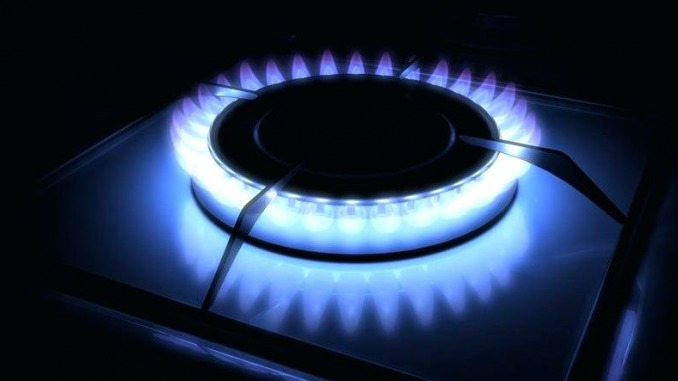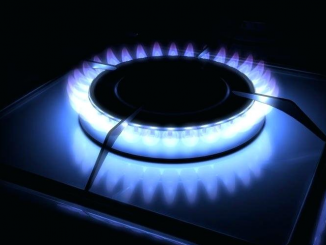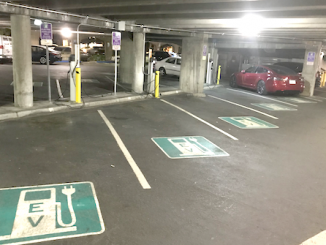
BY ELAINE GOODMAN
Daily Post Correspondent
After banning natural gas water heaters, clothes dryers and space heaters in new buildings starting last year, the city of Menlo Park is now looking at ways to eliminate natural gas appliances in existing homes.
One possibility is that when residents and businesses get rid of their old gas appliances, they’d be required to install electric replacements.
Or the city could decide to cut off natural gas flow into Menlo Park at some time in the future, according to the city’s 2030 Climate Action Plan, which the City Council adopted last year.
“Given the 25-year expected life of a typical gas furnace, it is critical for the city to begin prohibiting the installation of new replacement gas furnaces and water heaters as soon as possible,” the climate plan said.
The City Council will discuss the issue tonight (April 5) as part of a progress report on the Climate Action Plan. The meeting starts at 6 p.m.
Menlo Park’s Climate Action Plan aims to reduce greenhouse gas emissions in the city by 90% by 2030, as compared to 2005 levels. Carbon removal measures such as tree planting would take care of the other 10%.
In 2017, greenhouse gas emissions had dropped by 19% relative to 2005 levels, with a 71% reduction remaining to meet the 2030 goal.
About a third of the city’s greenhouse gas emissions came from natural gas in 2017, while 56% was from vehicles, 8% was from electricity and the remainder was from waste.
Switch to electric
In 2019, the city approved building standards that required heating, hot water and clothes dryers in new homes to be electric beginning in January 2020. Gas cooking and fireplaces are allowed, but homes must be pre-wired for electric if gas appliances are installed.
New commercial and high-rise residential buildings in Menlo Park must be all-electric. But exceptions are possible. For example, commercial kitchens may apply to use gas cooking appliances.
At least 15 other California cities have adopted a “Menlo Park style” all-electric code for new buildings, according to the climate plan, “proving that courageous action on climate does in fact inspire others to follow.”
Now, the climate plan is looking to build on the new-building standards by finding ways to convert 95% of existing buildings in Menlo Park to all-electric by 2030.
Converting buildings to electric
But before coming up with a specific proposal, the city is gathering information on the costs of converting a building to all-electric. The analysis will look at upfront costs and longer-term utility bill impacts for businesses and residents.
The analysis will include homes, granny units, offices, restaurants, commercial kitchens and hotels.
In a report to the council for tomorrow’s meeting, Sustainability Manager Rebecca Lucky noted that another Bay Area agency, which wasn’t named, is working on requirements to convert existing buildings to all-electric.
Consultants to that agency will recommend that the idea be put on hold “due to significant costs in electrifying existing buildings,” Lucky said.
A subcommittee of the city’s Environmental Quality Commission prepared the 2030 Climate Action Plan. The subcommittee initially envisioned as many as 76 steps the city could take to move toward its greenhouse gas reduction goals.
But when the Covid pandemic hit, the subcommittee whittled down the plan to six actions. Of those, the City Council picked three to focus on in 2021.
EV charging stations
In addition to the goal of converting 95% of buildings to all-electric by 2030, another action the council selected is to encourage owners of multi-family housing and commercial buildings to install electric vehicle charging stations.
The third selected action is to replace gas-powered vehicles and appliances that the city owns with efficient electric models. That includes city fleet vehicles, pool heating equipment, furnaces, water heaters and gardening equipment.
To help meet that goal, the Menlo Park Community Center, which is in the design stage, will include electric vehicle charging stations, an electric pool-heating system, and a solar energy system with battery storage.
Three goals in the Climate Action Plan that the council did not select for this year are:
• requiring all new vehicles to be electric by 2025 and reducing gasoline sales by 10% each year;
• reducing vehicle use by locating housing near transit and improving the bike-path network;
• and developing a plan to protect parts of the city from sea-level rise.
During tomorrow’s meeting, the council will reassess the six goals and decide whether they need more or less action for the rest of this fiscal year. In July, the council will talk about its climate action goals for next year.



Just want to be sure I understand the push to all-electric. We have a power grid and supply chain that often do not meet demands. We want to accelerate the conversion of everything to electric including millions of vehicles and homes in rabid order and add to that currently inadequate grid? What level of investment and time frame is being provided to reconstruct a grid and supply that will meet that demand?